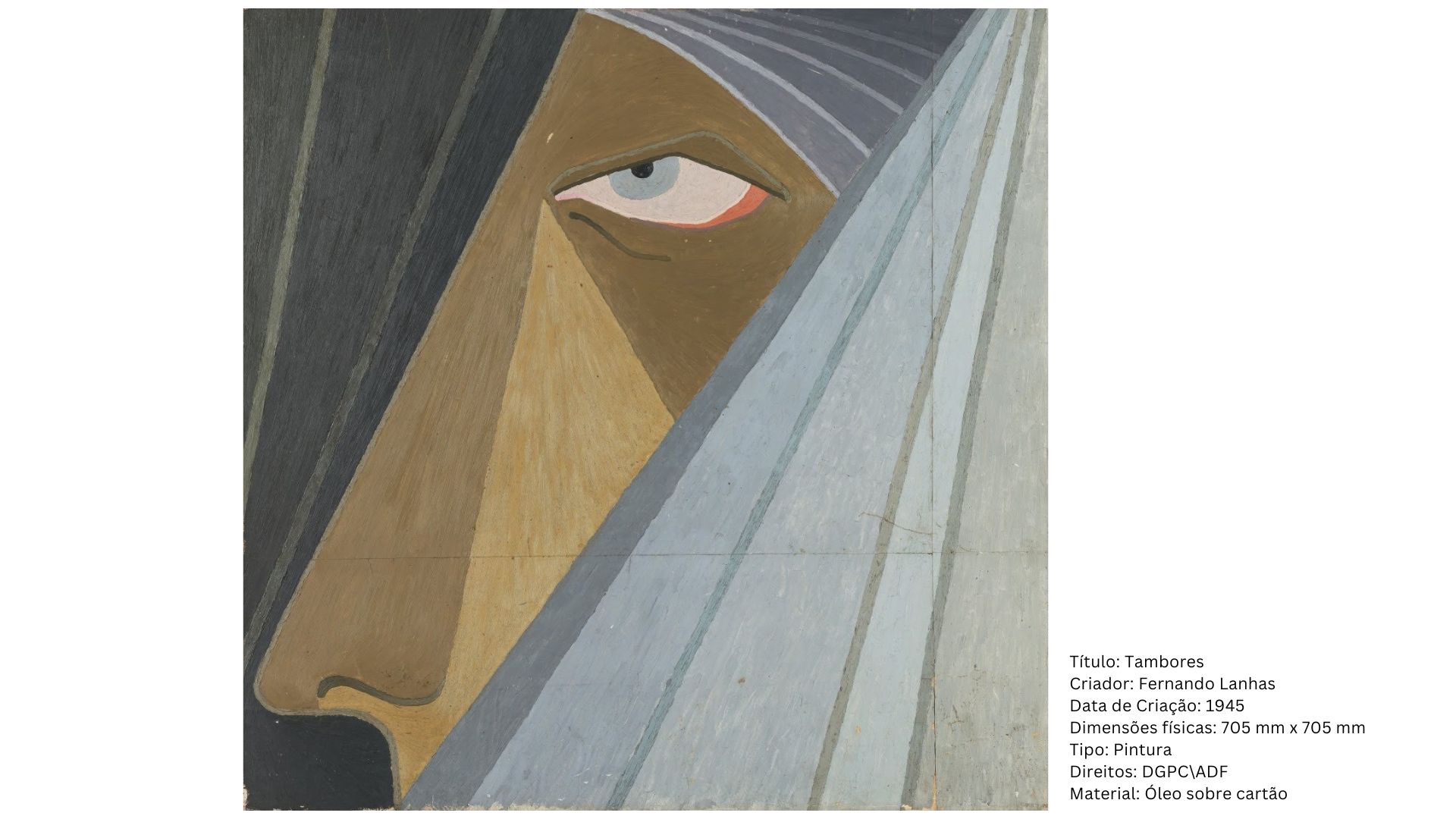Portuguese painter and architect Fernando Lanhas was born 100 years ago, in Porto, on 16 September 1923. He is represented in the long-term exhibition in the context of a new generation of artists and his work Drums bears witness to the transition to geometric abstractionism.
Drums, which is in the Soares dos Reis National Museum, is testimony to the transition to geometric abstractionism to which the artist would soon turn his entire pictorial practice.
The work vaguely evokes a physiognomy, focussing on the shape of the illuminated area, modulated in a triangle. The colours herald the “natural palette” that Lanhas would define in the following decade, in search of synthesis and harmony with nature.
Other works by Lanhas from this period have titles with a musical reference, eliciting the association of shapes with sounds. They were later replaced by a combination of acronyms and numbers. For reasons we don’t know, Tambores escapes this self-imposed standardisation.
He graduated in Architecture from the University of Porto’s School of Fine Arts in 1947 and is mainly recognised for his work as a painter. During his formative years in Porto, he led the Fine Arts Student Group. Belonging to a circle of students that included Nadir Afonso, Júlio Pomar and Manuel Pereira da Silva, he soon became interested in painting.
Considered the introducer of geometric abstractionism in Portugal, in 1945 he exhibited some of the paintings he had developed in the field of Abstractionism, a trend that would mark future Independent Exhibitions.
His entire work is characterised by a stylistic unity, conferred by the recurrent use of tense, broken lines that are sometimes repeated in parallel. The support of the plane, on which warm and cold, smooth or textured patches of colour are organised, combined with lines in perspective, proves to be the most important.
The colour range used, in a range of greys and ochres, alludes to the colours of certain minerals, sometimes used as the pigment itself. The broad, almost mechanical lines structure the field of perception, delimiting areas and taking on the function of signs.
The abstract nature of his painting is further reinforced by the technical designations given to the pictures, such as “O10-50” and “O42-69”.

